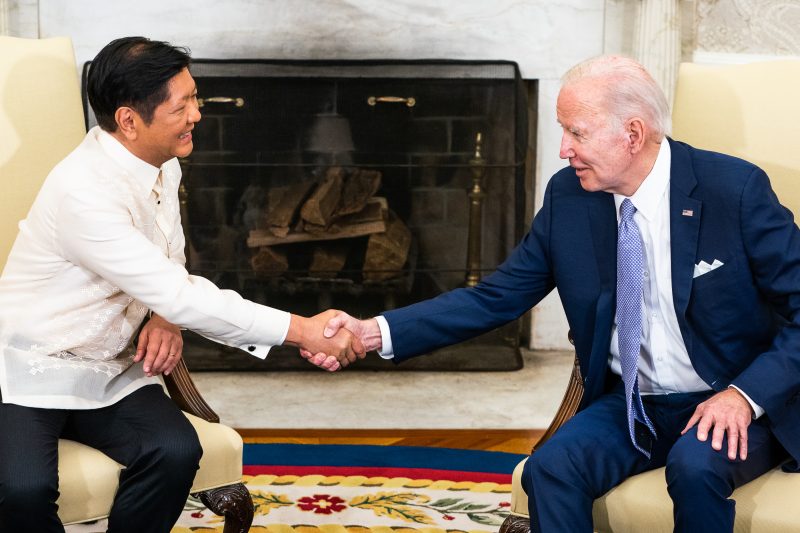Technology has always played a crucial role in the geopolitical arena, shaping the power dynamics between nations and determining the winners and losers in the global race for dominance. In recent years, the competition between the world’s two largest economies, the United States and China, has intensified, with the focus shifting towards the realm of technology. One company that has found itself at the center of this contentious battle is Huawei, a Chinese telecommunications giant that has been labeled both a national security threat and a crucial player in the race for 5G dominance.
Under the Trump administration, the United States sought to undermine Huawei’s global aspirations, viewing the company as a potential spy for the Chinese government. With a clear mission to secure America’s technological leadership, Trump dreamt of a Huawei killer, a competitor that could disrupt Huawei’s dominance in the global telecommunications market. Enter Joe Biden, the newly elected President of the United States, who is now faced with the challenge of unleashing this Huawei killer while navigating a complex web of technological dependencies and geopolitical tensions.
The term Huawei killer refers to a company or technology that can effectively compete with Huawei and provide alternatives to its products and services. The race to develop a viable Huawei killer is not just about undermining the Chinese giant but also about preserving America’s technological edge in the face of China’s rising influence. The key lies in 5G technology, which is expected to revolutionize industries, enable new applications, and significantly enhance connectivity worldwide.
However, finding a suitable contender to challenge Huawei’s dominance is no easy task. Huawei has managed to outpace its competitors through a combination of formidable technological prowess, aggressive pricing strategies, and close ties with the Chinese government. Moreover, many countries have already embraced Huawei’s infrastructure and are heavily dependent on its products for their 5G networks. Removing Huawei from these networks would incur tremendous costs and disrupt critical services, leading to significant political and economic consequences.
To address this challenge, the Biden administration has adopted a two-pronged approach. Firstly, the United States is investing heavily in the development of domestic alternatives to Huawei. This includes strategic collaborations between American telecommunications companies, software developers, and equipment manufacturers to build a competitive ecosystem that can challenge the Chinese giant head-on. By fostering domestic innovation, the US aims to offer attractive alternatives to Huawei’s products and services, providing nations with viable options that align with their security concerns.
Secondly, the Biden administration is actively engaging with its allies and partners, urging them to adopt a coordinated approach in dealing with the Huawei threat. Recognizing the importance of a united front, the US is working to build an international coalition that can collectively address the security risks posed by Huawei and work towards creating a more secure and trusted global telecommunications infrastructure. This approach leverages America’s alliances, promoting shared values and ensuring that countries are not coerced into using Huawei’s technology against their national interests.
However, taming the Huawei beast is not without its challenges. China’s economic leverage and its ability to retaliate through trade or other means pose significant risks for countries that take a strong stance against Huawei. Moreover, the race to develop a Huawei killer is not just limited to the United States. Countries such as South Korea, Japan, and European nations are also investing heavily in their domestic technological capabilities, creating a highly competitive landscape that could yield multiple alternatives to Huawei’s dominance.
As the battle for technological supremacy intensifies, it becomes increasingly clear that the race is not just about developing a Huawei killer. It is about establishing a secure, reliable, and trusted global telecommunications infrastructure that can withstand the evolving challenges of the digital age. While the United States and its allies work towards unleashing a competitive alternative to Huawei, it is essential to ensure that these efforts are underpinned by values of inclusivity, transparency, and respect for privacy and human rights.
In conclusion, the dream of a Huawei killer has become a global quest for technological dominance in the age of 5G. The Biden administration, like its predecessor, recognizes the need to challenge Huawei’s dominance and secure America’s technological leadership. By investing in domestic alternatives and fostering international cooperation, the US aims to create a more balanced and secure global telecommunications landscape. However, the road ahead is fraught with challenges, and success will require a delicate balance of technological innovation, geopolitical maneuvering, and respect for shared values. Only time will tell if the dream of a Huawei killer can turn into a reality.



























